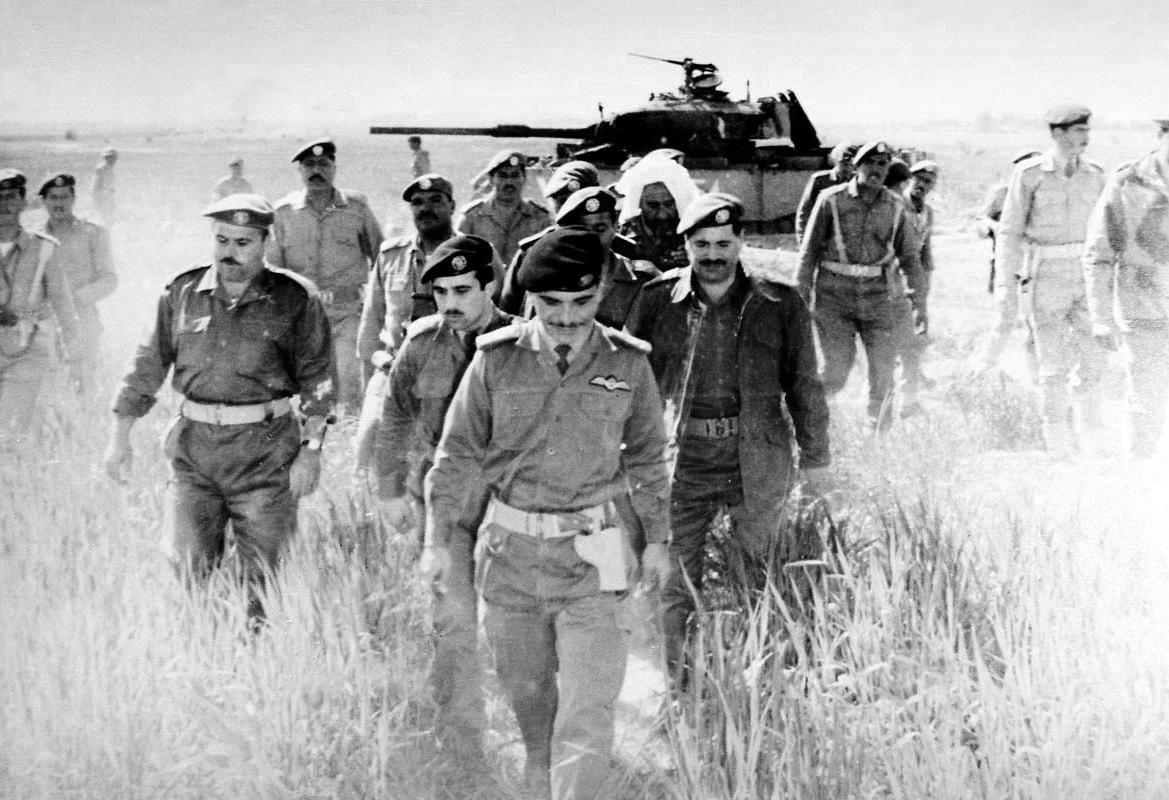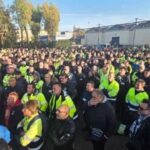
The defeat of 1967 (Six-Day War) led to the Israeli occupation of the West Bank, the Gaza Strip, East Jerusalem, the Syrian Golan Heights and the Egyptian Sinai, resulting in the displacement of hundreds of thousands of Palestinians, who sought refuge in Jordan and other neighboring countries. Thus, all of mandated Palestine came under Israeli occupation. [1]
After the end of the 1967 war, intermittent fighting between the Arab states and Israel continued on several fronts until 1970, in what became known as the “War of Attrition”. During this period, the Palestinian resistance continued its operations, which ceased to be mere isolated groups and became an organized effort, closer to a regular army with training camps. [2]
Baballa in Karameh
In 1968, Israeli forces entered Jordanian territory, claiming that they were strategic areas used by the Palestinian resistance. However, Palestinian fighters, supported by the Jordanian army, inflicted heavy losses on the invading forces and forced them to retreat, leaving behind their equipment and the bodies of their dead. This victory represented a great moral boost for the Arab peoples after the defeat of 1967. [3]
Black September
After the defeat, the Palestinian resistance moved its bases to eastern Jordan, where the long borders with Israel made it difficult to control. From there, fedayeen operations were launched against the occupation. However, Israeli pressure on Jordan increased, demanding the cessation of these operations. Faced with the refusal of the Palestinian leadership, bloody clashes broke out. The Jordanian army could not eliminate the resistance on its own, so it had support from Pakistani forces, while some Arab countries refrained from helping the Palestinians after direct threats from Israel. The fighting ended with a massacre that killed thousands of Palestinian fighters from all factions, and the resistance was forced to leave Jordan to resume its activities from Lebanon. The Palestinians called these events “Black September”. [4]

Since the late 1960s, the practice of “airplane hijacking” emerged as part of the strategy of leftist factions to give international visibility to the Palestinian cause.
The Palestinian left
The Palestinian left soon joined the armed struggle against Israel, with several factions emerging, the most prominent being the Popular Front for the Liberation of Palestine, founded by the Christian doctor George Habash, which brought together Muslims and Christians alike in its ranks. At the beginning of the 1970s, the Palestinian left emerged strongly alongside the Fatah movement, carrying out numerous fedayeen operations inside and outside occupied Palestine, even counting on fighters from international leftist currents in solidarity with the Palestinian people. [5]
Most notable operations:
Operation Lod Airport (1972): carried out by the Popular Front – General Command in collaboration with the Japanese Red Army, causing dozens of Israeli deaths and injuries.
Operation Munich (1972): executed by the Fatah-linked “Black September” organization, targeting the Israeli sports mission at the Olympic Games in Munich, Germany.
Operation Beisan (1974): carried out by a group from the Popular Front.
Operation Ma’alot (1974): executed by the Democratic Front for the Liberation of Palestine.
Kiryit Sh ShMon (1974): carried out by fedayeen infiltrated from Lebanon.
Operation Savoy Hotel (1975): carried out by a Fatah group that arrived by sea in Tel Aviv.
Operation Coastal Route (1978): led by the martyr Dalal Al-Maghrabi, in which a fedayeen group seized an Israeli bus on the coast, leaving dozens dead. [6]
Since the late 1960s, the practice of “airplane hijacking” emerged as part of the strategy of leftist factions to give international visibility to the Palestinian cause.
Plane hijacking stage
Since the late sixties, the practice of “aircraft hijacking” as part of the left-wing factions’ strategy to give international visibility to the Palestinian cause, at a time when Western governments ignored it. Although it managed to attract world attention, these actions affected the political relations of the Palestinians, being classified as terrorism. The first successful hijacking was carried out by the Popular Front in 1968, and operations subsequently intensified against European and American aircraft to press for the release of Palestinian prisoners. In September 1970, during the call “Airplane Week”the Popular Front hijacked three Western planes to Zarqa airport in Jordan and detonated them in front of the international media, which had a direct effect on the outbreak of the Black September events. [7]

It is estimated that between 16 and 20 planes were hijacked during that period, depending on the counts of failed attempts or diverted planes. Among the best-known operations is Operation Entebbe (1976), in which Yonatan Netanyahu, brother of Benjamin Netanyahu, died. [8]
Political and media impact
These operations contributed to consolidating the image of the Palestinian resistance as a cross-border movement, taking Lebanon as its main base. However, they also had negative consequences, associating Palestinians with terrorism in international forums and tightening controls at global airports for the first time. However, these actions helped keep the Palestinian cause present globally, before the factions stopped attacking targets outside of mandated Palestine. [9]despite continued Israeli persecution of resistance leaders outside Palestine.
Some believe that Palestinians who remained on their lands within Israel enjoy the same rights as foreign immigrants.
Earth Day
Some believe that Palestinians who remained on their lands within Israel enjoy the same rights as foreign immigrants, but the reality is different. In 1976, Israeli authorities confiscated approximately 21,000 dunams of land from Arab villages in the Galilee, including Sakhnin, Arraba and Deir Hanna. The inhabitants came out to protest en masse against this policy and were confronted by the Israeli army with live fire, resulting in the death of six Palestinians and dozens of injuries. Since then, Palestinians inside (known as 1948 Palestinians) commemorate these events every year in what is known as the “Earth Day”which has become a symbol of unity of the Palestinian struggle inside and outside Israel. [10]
Since this article is aimed at the Argentine reader, it is important to note that the majority of Palestinians do not use the word “Israel” in their everyday speech, preferring to refer to their cities and towns within the Green Line as “Lands of 1948”to differentiate them from the territories occupied in 1967.
You can read the previous articles here:
Palestine before British occupation (1917)
[Segunda parte] The British occupation of Palestine and the beginning of the resistance
Artistic expressions of the struggle of the Palestinian people: the song “Mister Dell” and the keffiyeh
The British withdrawal and the proclamation of the State of Israel: events of 1947-1948
The Palestinian question from 1948 to 1967
[1] The Jerusalem Catastrophe and Paradise Lost, Aref Al-Aref, Jerusalem, 1968.
[2] Declaration of the Palestinian Revolution, Palestine Liberation Organization, 1969.
[3] Chapters of the Arab-Palestinian Struggle, Bahjat Abu Gharbiya, Beirut, 1972.
[4] Palestino sin identidad, Salah Khalaf “Abu Iyad”, Beirut, 1978.
[5] Pages of my career in the struggle, George Habash, Damascus, 1980.
[6] The armed struggle and the search for the Palestinian State, Fayez Sayigh, Beirut, 1979.
[7] The Palestinian revolution behind the lines, Ghassan Kanafani, Beirut, 1971.
[8] Palestine Enciclopedia, Anis Sayigh, Beirut, 1984.
[9] Before the Exodus: Visual History of Palestine 1876-1948, Walid Khalidi, Beirut, 1984.
[10] Suleiman, Antoine. Earth Day: Documents and Articles, Nazareth: Association of Arab Professionals, 1977.
Source: www.laizquierdadiario.com

